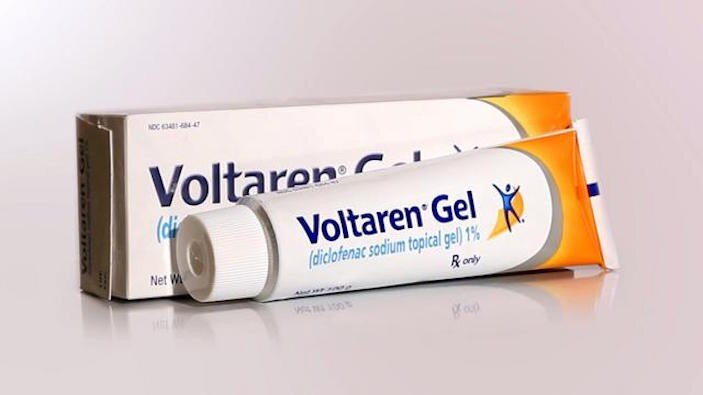Controversy Grows Over Trump's Use of Hydroxychloroquine
/By Pat Anson, PNN Editor
President Trump on Tuesday defended his use of hydroxychloroquine (Plaquenil) as a preventative treatment for COVID-19, even though there is only anecdotal evidence the drug may work against the virus and it may be harmful to some patients. Hydroxychloroquine has been linked to at least 48 deaths in the U.S. so far this year, according to an FDA database.
The president first disclosed his use of hydroxychloquine on Monday, claiming that White House physician Sean Conley said it was okay for him to take the drug.
“I asked him, ‘What do you think?’ He said, ‘Well, if you’d like it.’ I said, ‘Yeah, I’d like it. I’d like to take it,’” Trump said.
Dr. Conley confirmed that account in a statement.
“After numerous discussions (Trump) and I had regarding the evidence for and against the use of hydroxychloroquine, we concluded the potential benefit from treatment outweighed the relative risk," Conley said.
The Food and Drug Administration has only approved hydroxychloquine for the treatment of malaria, lupus and rheumatoid arthritis. However, nothing prevents a doctor from prescribing a drug "off-label" to treat another condition.
In recent months, Trump has touted hydroxychloquine as a possible "game changer" in the treatment of COVID-19. He said he started taking the drug as a preventative measure a week and a half ago, at about the same time two White House staff members tested positive for coronavirus.
“I’m not going to get hurt by it. It’s been around for 40 years,” Trump said. “For malaria, for lupus, for other things. I take it. Front-line workers take it. A lot of doctors take it."
Last month, the FDA warned against using hydroxychloroquine as a treatment for COVID-19 outside of a hospital or clinical study because of “serious and potentially life-threatening heart rhythm problems.” Patients with heart and kidney disease are especially at risk, the agency said.
The FDA's Adverse Events Reporting System lists over 10,000 reported cases involving hydroxychloroquine in the past decade, most of them serious, life threatening or resulting in hospitalizations. Nearly 600 people have died since 2010, including 48 deaths so far this year.
The number of adverse events involving hydroxychloroquine has soared in recent years, from less than a hundred cases in 2010 to over 4,500 in 2019
SOURCE: FDA ADVERSE EVENTS REPORTING SYSTEM
'Reckless Action'
"President Trump’s use of hydroxychloroquine to prevent Covid-19 infection without any clinical evidence of its utility is dangerous and will cause untoward toxicities, likely including death, in some people following his lead," Dr. Michael Polis, a fellow at the Infectious Diseases Society of America, told The New York Times.
"He needs to be strongly criticized by the medical community for this reckless action."
A recent study funded by the National Institutes of Health looked at patients at VA hospitals who were given hydroxychloroquine to treat COVID-19. They concluded the drug was ineffective and raised the risk of patients dying.
“In this study, we found no evidence that use of hydroxychloroquine, either with or without azithromycin, reduced the risk of mechanical ventilation in patients hospitalized with Covid-19. An association of increased overall mortality was identified in patients treated with hydroxychloroquine alone. These findings highlight the importance of awaiting the results of ongoing prospective, randomized, controlled studies before widespread adoption of these drugs,” researchers found.
Trump dismissed the research as a "phony study" by his political enemies.
“There was a false study done where they gave it to very sick people, extremely sick people, people that were ready to die,” he said Tuesday. “It was given by obviously not friends of the administration.”
Several patients who are prescribed hydroxychloroquine for rheumatoid arthritis or lupus have told PNN they are worried about possible shortages due to Trump's touting of the drug.
“I have been on hydroxychloroquine for five years for my autoimmune disease and had never had an issue getting the medication until the virus. In March, I had to check 3 different pharmacies before I found one that had any in stock,” one patient said. “My usual pharmacy said that not a single one of their local chains had it in stock and that they were back-ordered. The pharmacy that did have it, was only able to do a partial refill.”
“I am currently on Plaquenil for lupus and having Trump declare it is the cure for COVID-19 has limited my access to my medication. I am worried there won’t be enough,” another patient said.
“I am in a horrible RA flare at this moment. I have no doubt that the stress of being concerned about getting my needed medication has helped to bring this flare on," said another. "I am really concerned about being able to get my much-needed hydroxychloroquine. There is no reasonable explanation for drug shortages in this country other than ignorance.”
Former Vice-President Joe Biden said Trump was “absolutely irresponsible” for taking hydroxychloroquine, which could encourage others to take it to prevent COVID-19 infections.
"It's like saying maybe if you injected Clorox into your blood, maybe it'll cure you. What is he doing? What in God's name is he doing?" said the presumptive Democratic 2020 nominee. “Look, this is absolutely irresponsible. There's no serious medical personnel out there saying to use that drug. It's counterproductive. It's not going to help."






















